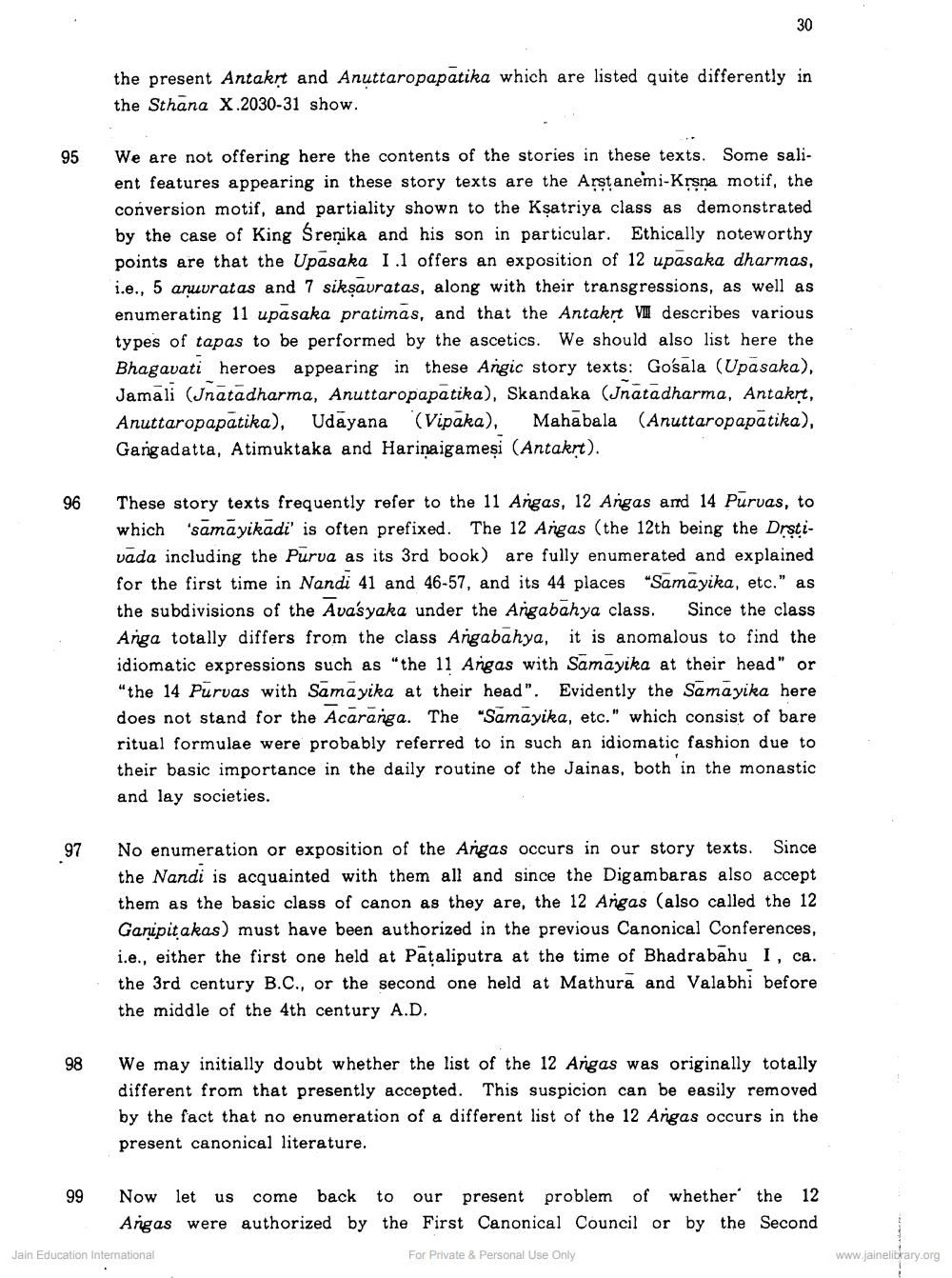________________
the present Antakrt and Anuttaropapatika which are listed quite differently in the Sthana X.2030-31 show.
We are not offering here the contents of the stories in these texts. Some salient features appearing in these story texts are the Arstanemi-Krsna motif, the conversion motif, and partiality shown to the Kșatriya class as demonstrated by the case of King Sreņika and his son in particular. Ethically noteworthy points are that the Upasaka 1.1 offers an exposition of 12 upasaka dharmas, i.e., 5 anuuratas and 7 sikşavratas, along with their transgressions, as well as enumerating 11 upasaka pratimas, and that the Antakrt VI describes various types of tapas to be performed by the ascetics. We should also list here the Bhagavati heroes appearing in these Angic story texts: Gosala (Upasaka), Jamali (Jnatadharma, Anuttaropapatika), Skandaka (Jnatadharma, Antakrt, Anuttaropapatika), Udayana (Vipaka), Mahabala (Anuttaropapatika), Gangadatta, Atimuktaka and Harinaigameși (Antakrt).
96
These story texts frequently refer to the 11 Angas, 12 Angas and 14 Purvas, to which 'samāyikādi' is often prefixed. The 12 Angas (the 12th being the Drstivada including the Purva as its 3rd book) are fully enumerated and explained for the first time in Nandi 41 and 46-57, and its 44 places “Samayika, etc." as the subdivisions of the Ava'syaka under the Angabahya class. Since the class Anga totally differs from the class Angabahya, it is anomalous to find the idiomatic expressions such as "the 11 Angas with Samayika at their head" or "the 14 Purvas with Samayika at their head". Evidently the Samayika here does not stand for the Acaranga. The "Samayika, etc." which consist of bare ritual formulae were probably referred to in such an idiomatic fashion due to their basic importance in the daily routine of the Jainas, both in the monastic and lay societies.
No enumeration or exposition of the Angas occurs in our story texts. Since the Nandi is acquainted with them all and since the Digambaras also accept them as the basic class of canon as they are, the 12 Angas (also called the 12 Ganipit akas) must have been authorized in the previous Canonical Conferences, i.e., either the first one held at Pataliputra at the time of Bhadrabahu I, ca. the 3rd century B.C., or the second one held at Mathura and Valabhi before the middle of the 4th century A.D.
98
We may initially doubt whether the list of the 12 Argas was originally totally different from that presently accepted. This suspicion can be easily removed by the fact that no enumeration of a different list of the 12 Angas occurs in the present canonical literature.
99
Now let us come back to our present problem of whether the 12 Angas were authorized by the First Canonical Council or by the Second
Jain Education International
For Private & Personal Use Only
www.jainelibrary.org




